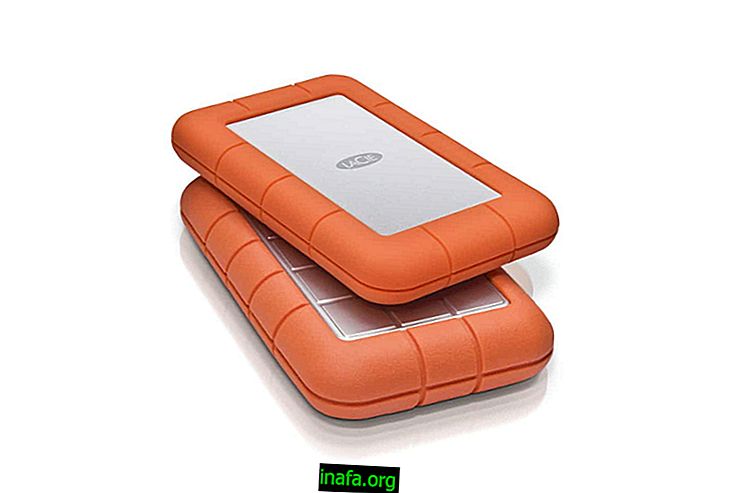Safer Mac: 17 Tips to Prevent Intrusion and Information Theft
One of the main advantages of using Mac over Windows is its security, considerably greater than that of rival Microsoft computers. However, this does not mean that Apple machines are invincible or that they enter any site with viruses without fear. That's why we've compiled a list of 17 tips to make your Mac safer from intrusion or information theft threats. Check it out below!
Tip: Learn how to make your Mac battery last longer with these 20 tricks!
1. Turn on your firewall
Surprisingly, most of the time the Mac firewall is not enabled from the moment you first turn it on. To turn it on, open the Apple menu and go to System Preferences a . Then choose Security and Privacy and open the Firewall tab. Unlock the panel by clicking the lock icon in the bottom left corner of the window and enter your login credentials as an administrator. Finally, click the Start or Enable Firewall button .

2. Enable Mac Stealth Mode
Available in firewall options, Stealth Mode makes your Mac more secure by making it invisible on public connections, such as WiFi signals at airports or restaurants. To do this, simply return to the Firewall tab as described in the previous step, enter credentials, and click Firewall Options . In the window that will open, simply select Enable stealth mode .
3. Create a user without administrator access
To prevent random people from changing important settings on your computer, create a user without administrator access and use them for routine activities. The administrator account would be just for changing important settings, making your Mac more secure if they steal your computer.
Even using ordinary user access, simply enter administrator credentials when trying to do something that requires this type of access. In addition, using an account without administrator privileges can prevent malicious software from being installed as authorization will be required before installing.
4. Disable automatic login
When you install your Mac (or format it) and create the first user account, it will automatically sign in every time you turn on your computer. You can change this setting and have your Mac display a login screen when you turn it on. To do so, go to System Preferences in the Apple menu, open the Users and Groups tab. Click Automatic login and check Off .

5. Configure Mac to prompt for password each time it is activated
You can set your Mac to require a password each time it is powered on or taken out of hibernation. To do so, return to System Preferences and the Security and Privacy menu. Stay on the General tab, choose Require Password… and set how long after sleep or after screensaver starts your Mac will require you to reenter the password.

6. Use apps for creating and storing strong passwords
It sounds counterproductive, but the best way to make your Mac more secure is to create strong and varied passwords, while not writing them down anywhere, at the risk of someone getting all your access. However, some applications like LastPass and 1Password are of great help. We consider 1Password one of the top 20 apps for MacBook Pro, including.
Both have strong password generators and store them in your account, which is encrypted and protected from attacks. No security method is 100% effective, but using these apps is one of the safest methods to keep your passwords secure.
7. Remove Adobe Flash Player
One of the most vulnerable programs, some years ago the end of its use has been discussed and applied by some companies. To uninstall the software from your computer. Identify which version of your Mac OS you have by opening the Apple menu and selecting About This Mac . Search this site for the version of Flash uninstaller corresponding to the version found and download it.
Close your browsers, open the program and choose Uninstall . The confirmation screen below should appear, informing you that Adobe Flash Player has been successfully uninstalled.

8. Block app downloads from unknown authors
A safer way to make your Mac safer, but necessary if other people use your computer as well. You can block installation of apps downloaded outside the App Store or from developers unknown to Apple. To do this, go back to System Preferences and the Security and Privacy menu.
On the General tab, click the lock icon to unlock changing settings with your username and password. Then in the " Allow apps downloaded from " part, select the Mac App Store and identified developers option. It serves as a compromise between safety and practicality, as it is not limited to just the Mac app store.

9. Enable FileVault to Encrypt Your HDD or SSD
Encrypting your storage disk is one of the best ways to make your Mac more secure. Apple's operating system has a native function that performs this encryption, protecting your file from intruders or thieves as it protects your files when you turn off your computer. The functionality is called FileVault and to enable it, sign in with your administrator account in the Security & Privacy menu of System Preferences .

Just enter the FileVault tab and click Enable FileVault .
10. Review privacy settings
In the same Security and Privacy menu, go to the Privacy tab to configure what type of information you are offering to applications installed on your computer. Because of this, remember to look at this tab often. In the list on the left are the type of past data - such as location and calendar contacts - and by selecting one, the list on the right shows the applications that have access to this information.

Tip: Pay special attention to accessibility . It lists applications that can somehow control your computer.
11. Review Safari Privacy Settings
In addition to Mac privacy settings, also regularly review your browser settings, especially Safari. From the options available in his privacy menu, you can open an incognito window, delete history and cache, block cookies and choose whether to share location information with the websites you browse.
12. Keep your Mac up to date
It's important to note that with each Mac update, new security settings are installed on your system, preventing you from being caught by new viruses or any other recently discovered threats. Making sure your computer is always up to date is a big step towards making your Mac safer. Usually updates are downloaded and installed automatically. To check for new updates, go to the Mac App Store and go to the Updates tab, which will be listed below.

13. Review what you are sharing with other computers
Your Mac can share files with other computers - even Windows or Linux - and other types of data. While the possibility is quite useful in many ways, it is also a big risk, especially if left unattended and turned on. Therefore, we recommend disabling this setting when you do not need to share a file with someone.
To do so, go to System Preferences and go to the Sharing menu. In it, disable any left-hand menu boxes that you will not use, thereby restricting third party access to your information.

14. Set a firmware password
Even with all the protections you can install on a Mac, there is a possibility that your computer could be breached by other, more specific methods. Having your computer connected by a USB drive, for example, is one such possibility. To protect you from even this unusual intrusion, a firmware password may be required, but entering it is not as simple as the others described in this list.
To set it up, you need to restart your Mac and access OS X Recovery by holding down the Command + R keys. When the window called Utilities appears, you can release the keys. Then select Firmware Password Utility .
In the other window that will open, click Enable Firmware Password . Enter the new password and in the Verify field, confirming the Set Password button. Click the Apple icon to shut down or restart your Mac, ending the process. Important: Do not forget the firmware password at all. Losing it means having to make an appointment at an Apple Store or authorized service center for proper recovery, making it impossible to use your computer until then.

If anyone tries to boot the Mac from a USB drive or through Mac OS X Recovery, they will come across this screen and will be prompted to enter the configured firmware password.
15. Create a Guest User
It may seem counterproductive, but releasing a guest user will make your Mac more secure if you have lost your computer. Although the user gives a gateway through which someone with malicious intent can enter, he will not release everything. That said, while your Mac is on and using the internet through Safari, you can use functions like iCloud's Fetch My Mac to track your location, aiding in your recovery.
16. Back Up
If all else fails and your computer becomes infected in any way, it is useful to have a system backup on an external hard drive. If the problem cannot be solved, relying on a backup will allow you to format your Mac without further loss. Learn how to create a backup using the Time Machine function in this text.

17. Enable Apple ID two-factor authentication
In addition to password, enabling Apple ID two-factor authentication will require a person who has access to your Mac to also need access to your iPhone or iPad. After entering the password, a verification code is sent to the mobile device and must be entered on the computer before you can use it. Activation can be done by going to the Apple menu and going to System Preferences .
In it, open the iCloud menu and the Account Details option. Under Security, select Configure two-factor authentication to enable it. Remember that both devices must be turned on and connected to the same Apple ID on iCloud for the process to work.
Read too:
How do you make your Mac safer?
Using these tips, we believe you can improve the security of your computer by preventing stolen information or installing malicious programs. Which of these measures have you installed on your Mac? Have any other safety tips to recommend? Comment with us!



